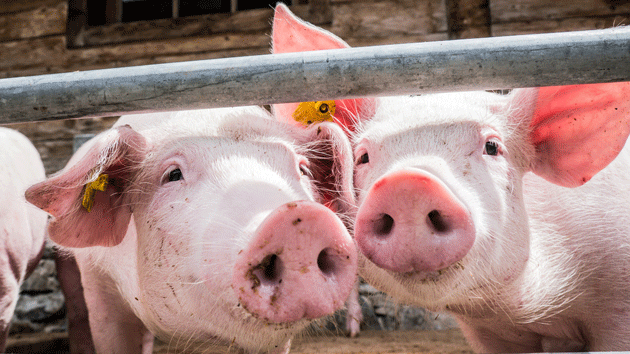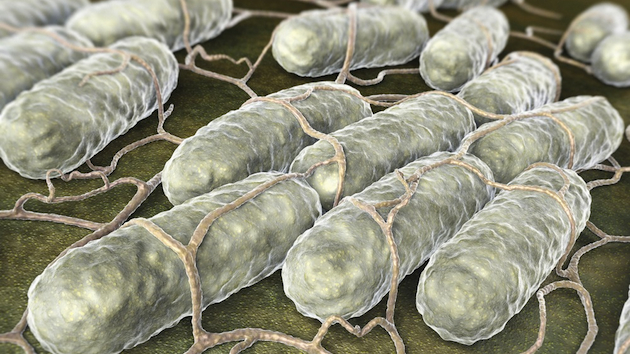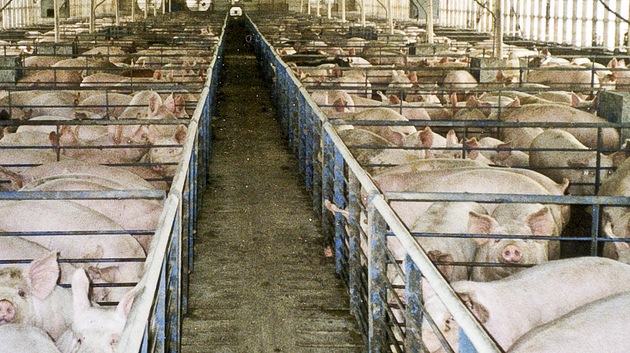
<a href="http://www.shutterstock.com/cat.mhtml?lang=en&language=en&ref_site=photo&search_source=search_form&version=llv1&anyorall=all&safesearch=1&use_local_boost=1&search_tracking_id=4JGoQvxhl0N9DGwJ2h-ETA&searchterm=pig%20farm&show_color_wheel=1&orient=&commercial_ok=&media_type=images&search_cat=&searchtermx=&photographer_name=&people_gender=&people_age=&people_ethnicity=&people_number=&color=&page=1&inline=122923786" target="_blank">FooToo</a>/Shutterstock
For decades, it’s been thought that low, regular doses of antibiotics help livestock grow big—thus increasing meat producers’ profits. So common is the practice of lacing farm animals’ feed with the drugs that an astonishing four-fifths of all antibiotics in the United States now go to livestock.
But a new meta-analysis by two Princeton researchers shows that antibiotics aren’t as effective at promoting growth as they used to be. Studies from 1950-1985 suggested that antibiotics increased weight of young pigs by an average of about 17 older pigs by 4 percent. But similar studies since 2000 found much less dramatic results: 1 percent increase for young pigs and no measurable increase for older pigs.
No one knows why the drugs have become less effective—and in fact, there’s no consensus on how exactly antibiotics increased growth in animals to begin with. One theory is that the drugs fight low-level infections, which allows the animal to use its energy for growing instead of warding off germs. The authors of the new analysis theorize that as hygiene at livestock operations improve, the rate of infections might be decreasing, thus negating the need for antibiotics.
Another (scarier) possibility: Bugs that cause common animal infections are becoming resistant to the antibiotics. The consequences of antibiotic resistance, of course, go far beyond pigs’ rates of growth. As my colleague Tom Philpott has reported, superbugs can jump from animals to humans. Antibiotic-resistant infections already kill 700,000 people every year worldwide. A recent UK report predicted that number will rise to 10 million by 2050.
“If the benefits of [antibiotics for animal growth] have diminished, then it becomes reasonable to be cautious and avoid the potential public health costs,” write the new report’s authors. “Antibiotics are not needed to promote growth, but they are essential to treat infectious diseases and maintain animal health.”

















